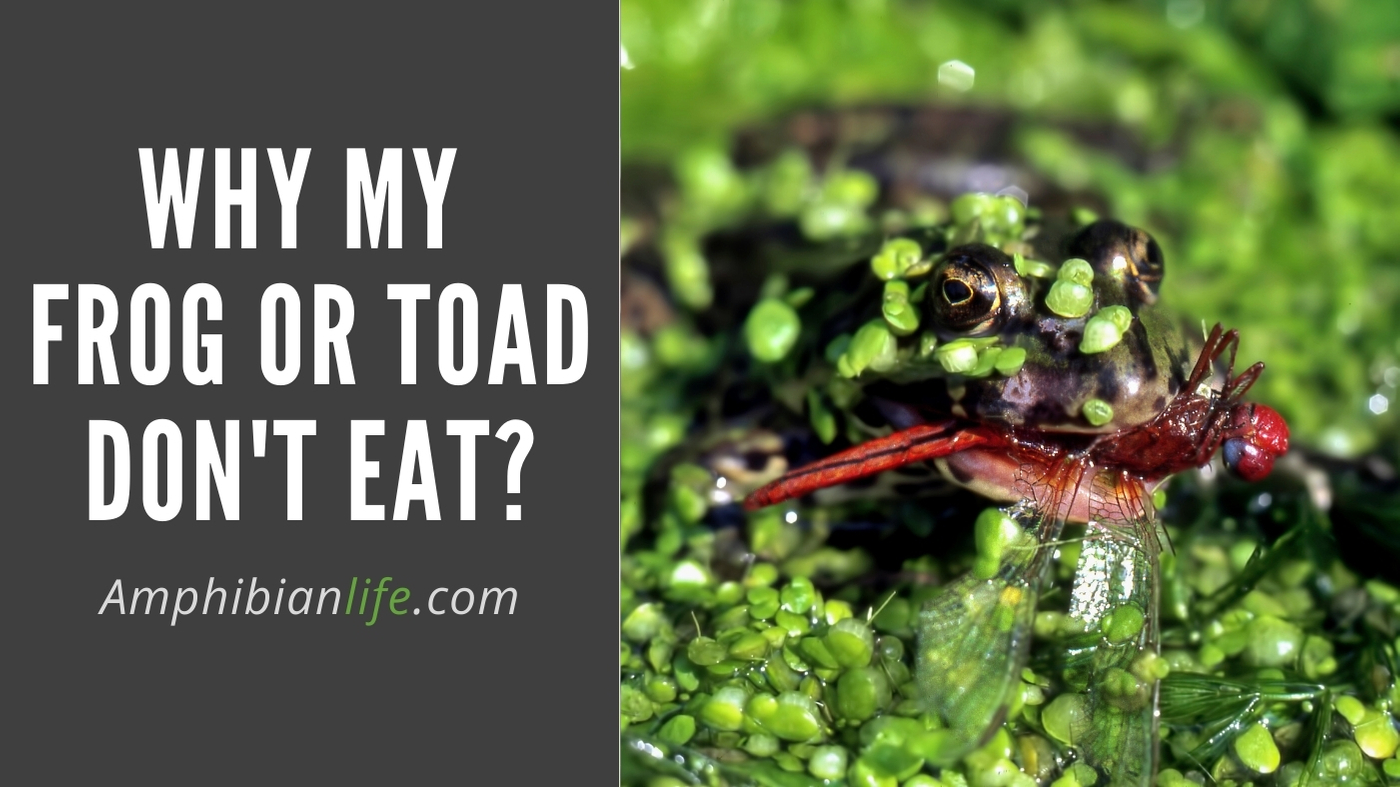
After you get a frog, you are naturally going to take care of it by feeding it. But what if your frog won’t eat? I did some digging and found out why frogs stop eating and what you can do about it.
First, you need to know that frogs can go a long time without eating. This is only so when your frog is healthy. And this can vary per frog species. There are a couple of things you can try to see if your frog wants to eat. First, if you’re trying to hand feed, drop the prey in the tank and let nature take its course.
The second thing is that your frog needs a spot where he can feel safe and eat. If this isn’t the case, you can create this in the tank or vivarium so that the frog has a place to go.
Now that this question is answered, you might have some other questions about why your frog isn’t eating well.
What Frogs Actually eat?
Frogs are carnivores, meaning they primarily eat meat. Their diet consists of various small creatures, including:
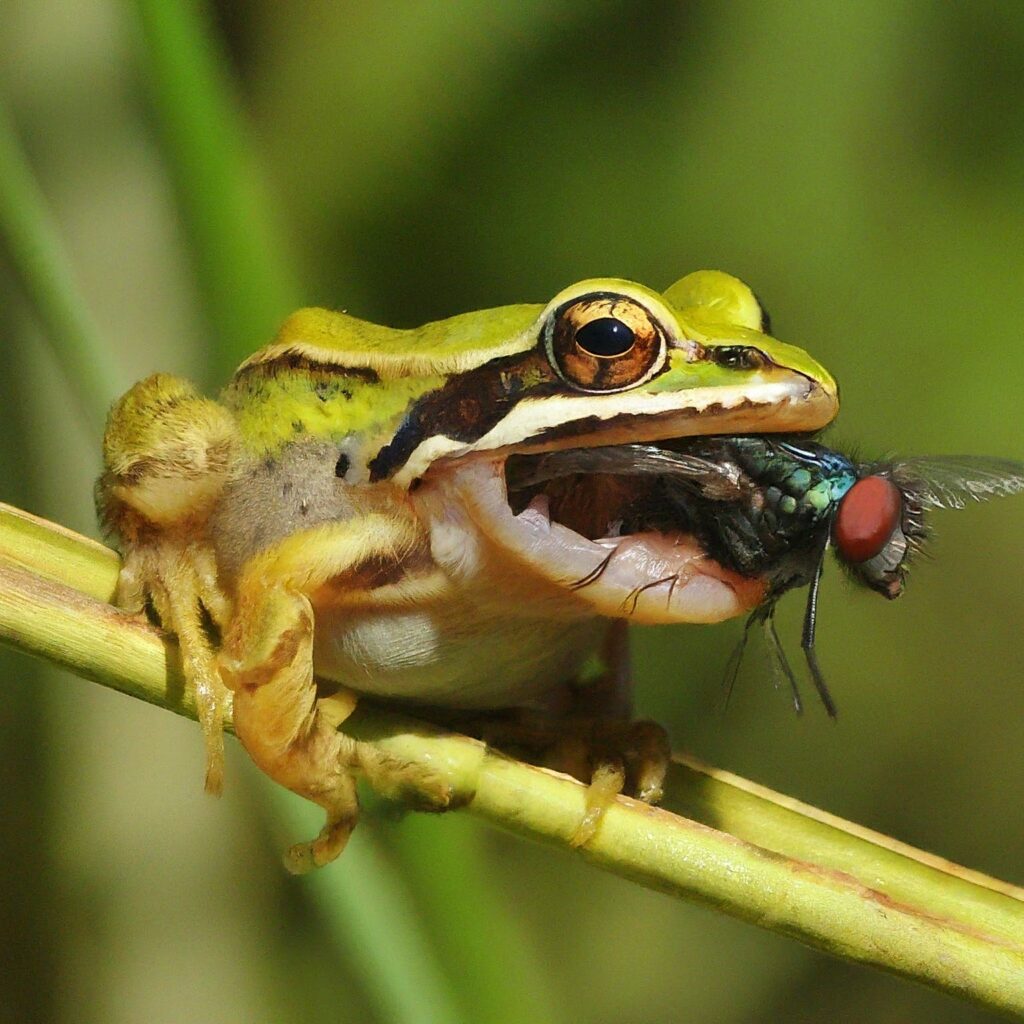
Insects:
Flies
Moths
Source icon
Beetles
Grasshoppers
Crickets
SpidersAnts
MosquitoesOther invertebrates:
Snails
Slugs
WormsCrayfish
Small shrimpSmall vertebrates:
Tadpoles (of other frog species) Small fish
Salamanders
Newts
Mice
Bats
Small birds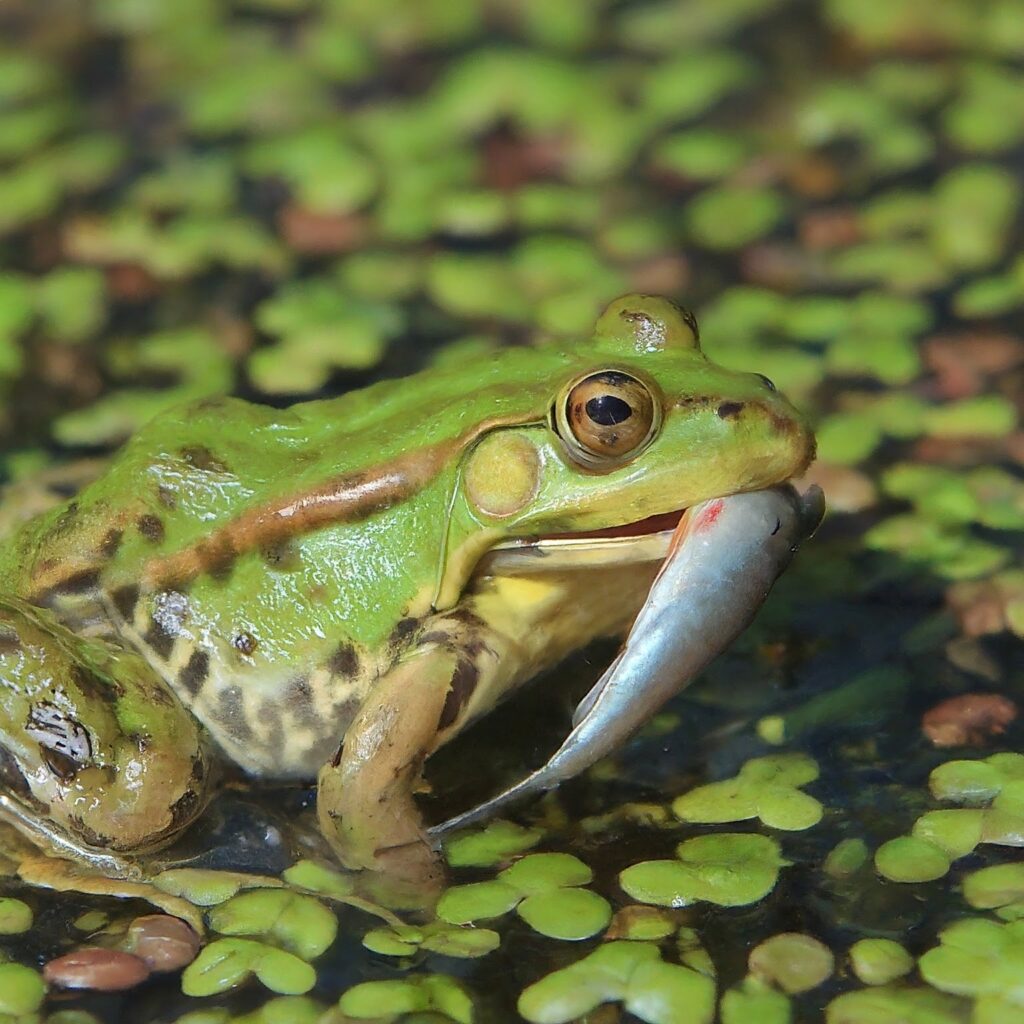
Additional notes:
Frogs are ambush predators, meaning they wait for their prey to come to them and then use their long, sticky tongues to catch it. The size of the prey a frog can eat is limited by the size of its mouth.
Some frogs will also eat detritus, such as decaying plant matter.
Tadpoles are omnivores and eat both plants and animals.
Why won’t my frog eat its food?
There are several reasons why your frog won’t eat.
First of all, I would like to mention that there are a lot of frog species and no cure is automatically for all of them. Allow me to give the most common reasons why your frog isn’t eating.
Your frog is new in the tank. This means that your frog does still need to settle in a bit to feel completely safe and secure.
What you can do to reduce the new stimuli is the following. Cover 3 or 4 sides of the tank that your frog is in with something that is dark.
Then, when it gets settled in, you can remove the dark pieces one by one and when time goes by. This way your frog can get acquainted with the new environment slowly.
The frog isn’t used to you feeding it.
If you’re feeding your new frog by hand, I would suggest you feed it another way. Take for example the food you’re giving, drop it in the tank and let nature run its course.
The frog is probably not adjusted to feeding by hand, and this is an excellent way to see if your frog will eat when you’re not the one giving it.
Does your frog have a bacterial infection?
There are a couple of ways to see if your frog has a bacterial infection and is not eating because of it.
But this is difficult to do. Most people will treat the frog with a broad-spectrum antibiotic and pray to god that it works.
Generally, a bacterial infection comes from bacteria. If you want to detect bacterial infection in your frog, you have to look out for some symptoms like:
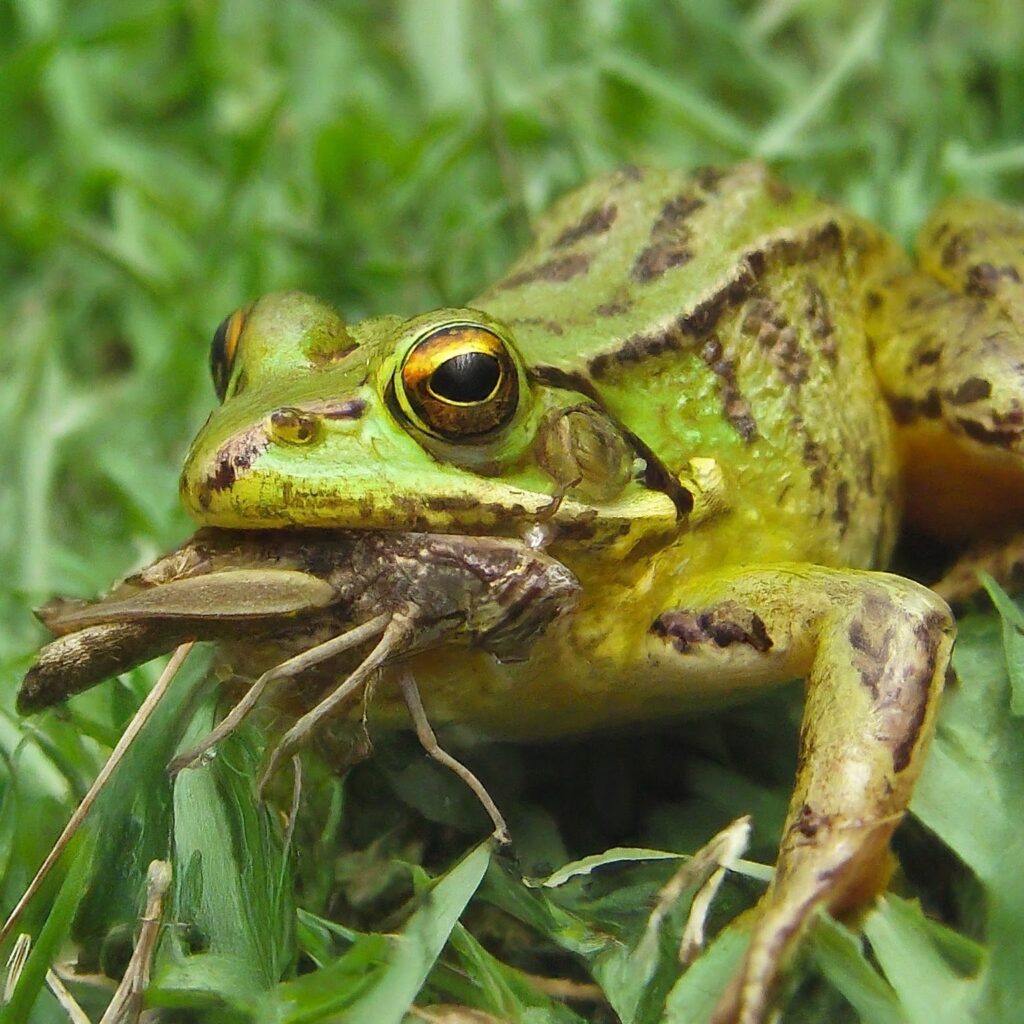
How can you tell if a toad is dying?
Visible Signs Frog is not Playing Dead?
- Lack of Interest in food
- Trying to Lay Upsidedown
- Consistent Weight loss
- The frog gets cloudy eyes
- Oedema – swelling or inflammation
- Skin haemorrhaging.
- Tenacious Lack of Appetite
- Darkening of Skin Color
- Paleness and Flaky Skin
- Disorientation- Loss of Vision
- Open Sores and Wounds
If some of these signs occur, the first thing you have to do is reducing the risk of spreading the bacterial infection from your frog. You can do this by putting your frog in another separate container. I plastic terrarium will do the trick.
If you don’t know which treatment to go for, for your frog, you can always contact someone you know who has more experience with having frogs as pets.
They can probably help you in deciding which treatment is right for your frog. If you want to treat your frog, you will best find a specialized veterinarian that can help you.
Or maybe a viral infection is why your frog won’t eat
For a hobbyist, it is hard to identify if your frog has a viral infection. That’s why you should contact a vet and let them inspect what it is. Besides that, you should know the importance of quarantine, and you should be aware of the risks of transmitting the viral disease.
What about hibernation and not eating?
First of all, let me explain to you what hibernation is. Hibernation involves the frog lowering its metabolism to a point where it uses very little energy.
This means that the heart rate and body temperature drop and they usually don’t eat anything. Many animals do this every winter. Think about: Bears, snakes, jumping mice and also many insects.
Hibernation is a normal process to go through for some frog (and toad) species. If your frogs want or need to hibernate, and it is appropriate for the species to do so, then here are some ways to do it safely and easily.
You may notice that your frog changes some habits and it is giving signals that it is ready to hibernate. The signs can be that it just refuse food altogether and that it sleeps a lot. Let your pet tell you when it is ready to hibernate.
There is an important thing to know, and that is that your frog needs to be in good health and have a healthy body weight to go into hibernation.
Frogs that are sick shouldn’t go into hibernation because they might not get out of it. If your frogs have symptoms of a sickness, contact a vet and let your frog taken care of.
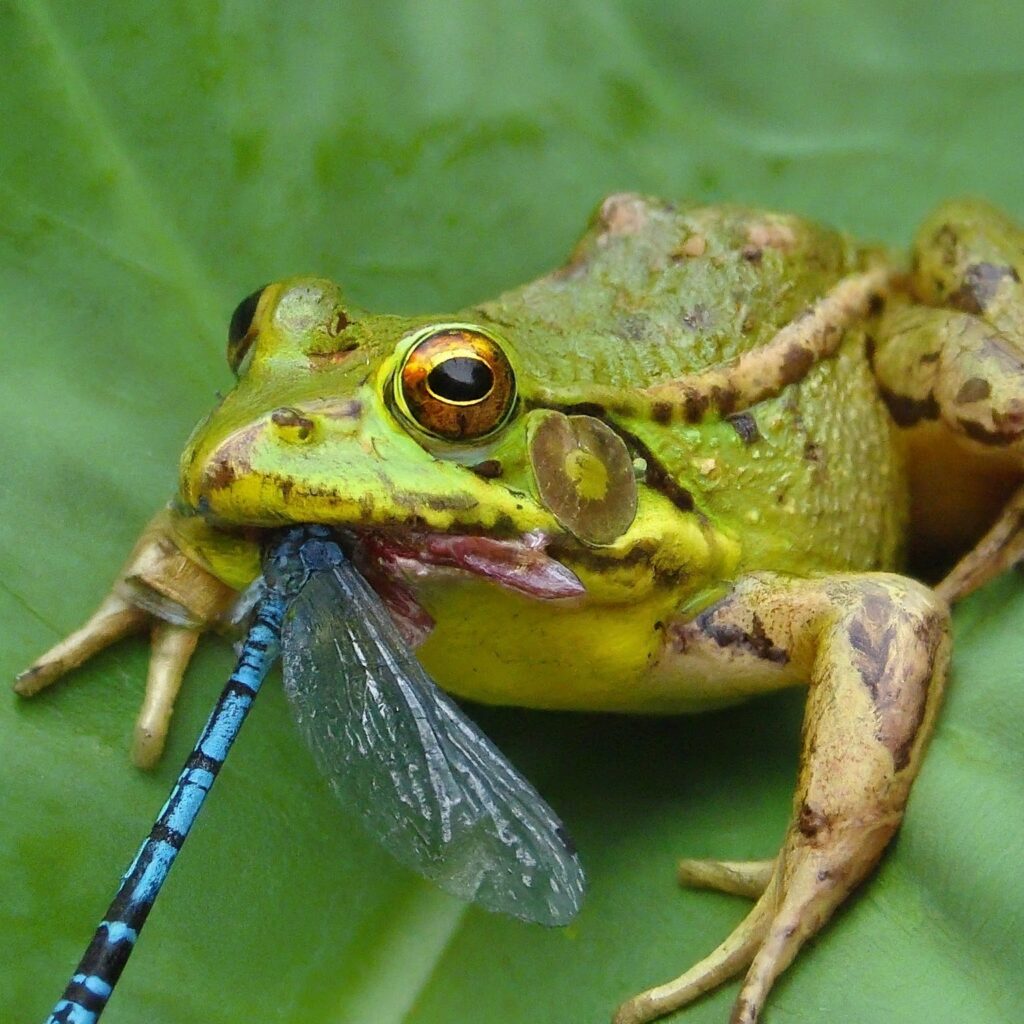
How to put your frog into hibernation
If the hibernation season is upon you, give your frog about 14 days with heat and light (this should be your standard setup) after you have given him food for the last time. This is important because this way your frog has the time to clear its bowels of its last meal.
This is particularly important because when there is still food in the intestines when he goes into hibernation, the food will stay there and starts to rot. This could kill your frog.
Once everything is cleared out, you can remove the heating and the lightning, and let the frog acclimate at room temperature for a week or so.
After you have done all this preparation, it is time to move your frog to a cold environment.
Cold means that the room should be above 50 degrees Fahrenheit and below 68 degrees.
Also, keep in mind that the temperature can vary a bit In the room and that is no problem.
But if the temperature goes below 50 degrees, you should move the frog to another location.
The way frogs digest food is awesome
I have always found the way frogs eat an awesome thing to see. Did you know that frogs close their eyes and retract them through the holes in their skull to push down food down their throat? Now you do!
The digestion of the food starts in the mouth when it catches its prey. The frog uses his tongue to catch the prey and then uses his maxillary teeth to hold on to it.
He then swallows its prey entirely and when he swallows he closes his eyes and retract them to push down the prey and to propel the food towards the oesophagus.
After the food is moistened by the saliva of the frog (this happens in the buccal cavity) the food moves from the mouth to the pharynx.
After that, the food moves down further to the oesophagus. This is a small tube, and it is located in the anterior section of the digestive tract. This small tube connects the mouth to the stomach.
The oesophagus moves the food to the stomach where the process of the breakdown of food into simpler forms is started.
This happens through some enzymes that are secreted by the gastric glands in the walls of the stomach. When the food is broken down it moves further along the digestive system through a process we call peristalsis.
This means that there are muscular contractions of the muscle tissue in the walls of organs in the digestive system. Then the food issues from the stomach to the small intestine.
This is where the consumption of nutrients takes place. This is an integral part of the process of digesting food. After all, the nutrients are absorbed, the food that is undigested moves into the large intestine.
The large intestine then performs the function of absorbing water from the food residue. The water or liquid waste is then moved to the bladder whereas the solid waste is moved to the cloaca. Both waste types are then going out of the body through the cloacal opening.
What else do I need to know if my frog won’t eat?
You should know that you can always contact a professional If you’re not sure of the situation. It is better to be safe than sorry. Do you think that your frog has a bacterial infection or a viral infection? Contact someone who can help you with that.
Related questions
Can frogs eat human food?
They should not eat human food. Simply because much of it is not in their diet. Frogs swallow their food whole. They eat flies, mosquitoes, dragonflies, moths, grasshoppers, and worms. Some of the large frogs will also eat small snakes, mice, other small frogs, and even baby turtles.
I have two frogs in one tank, but one is not eating. What do I do?
It is best to separate the frog that isn’t eating from the one that is. The frog that isn’t eating may have a sickness that you are unaware of, and you don’t want to spread the disease to the other frog. Separate them to examine what is wrong with the frog.
Should I feed my frog night-crawlers or crickets?
You should feed both to your frog. Variety is key for any amphibian. They will likely benefit from both in different ways. You can also try something else like waxworms. This will fatten up a frog, so it is best to use small amounts of waxworms.
